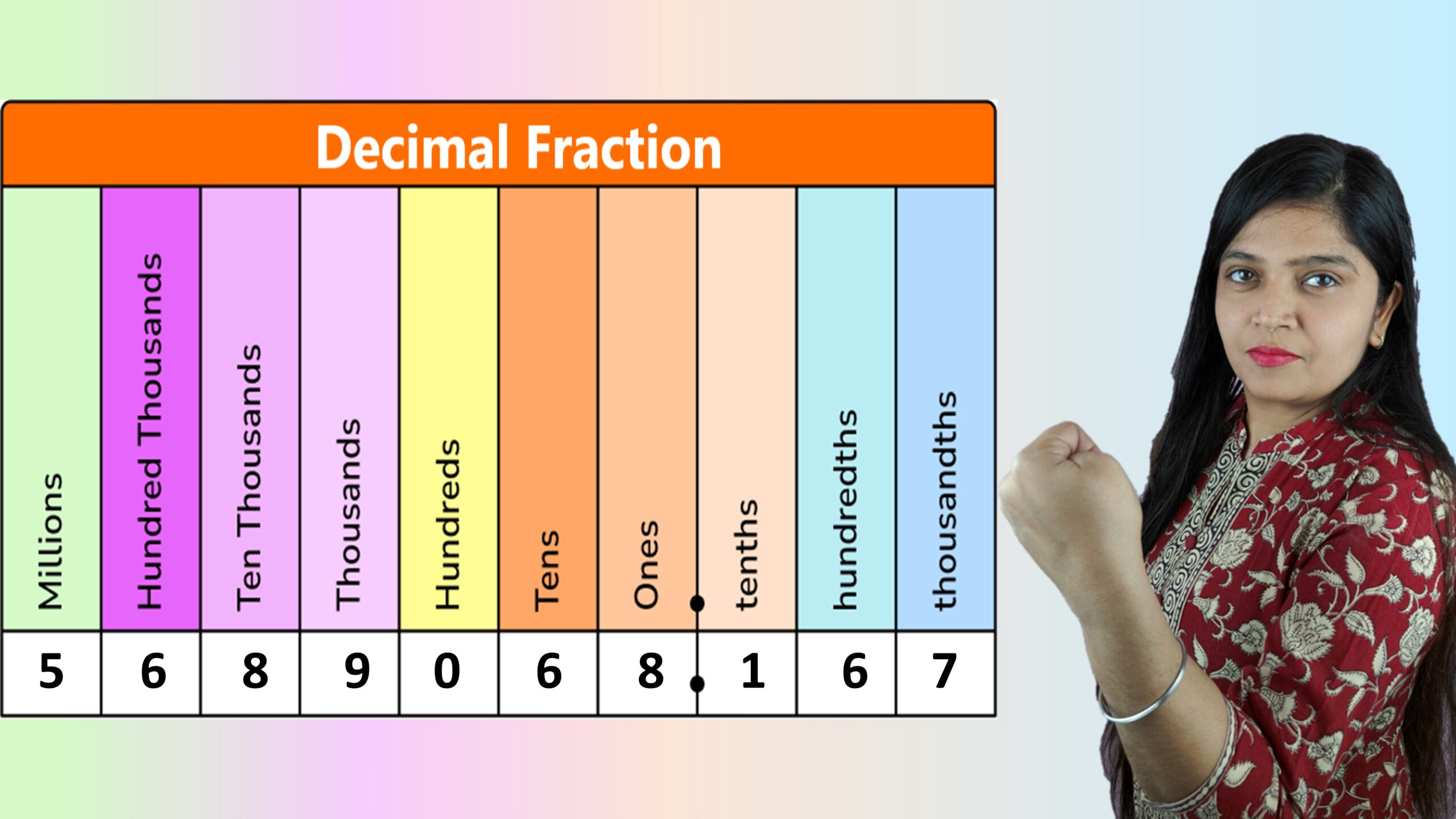Exercise: 5-F
Multiple Choice Questions
Q1: The place value of 3 in 5.136 is
Step 1: Write the number clearly: 5.136Here,
– 1 is in the **tenths** place → \(\frac{1}{10}\)
– 3 is in the **hundredths** place → \(\frac{3}{100}\)
– 6 is in the **thousandths** place → \(\frac{6}{1000}\)
Step 2: So, the place value of 3 =
= \(\frac{3}{100}\)
Answer: c. \(\frac{3}{100}\)
Q2: The place value of 4 in 3.046 is
Step 1: Write the number clearly: 3.046 Step 2: Identify the decimal places: – 0 is in the tenths place → \(\frac{0}{10}\) – 4 is in the hundredths place → \(\frac{4}{100}\) – 6 is in the thousandths place → \(\frac{6}{1000}\)Step 3: So, the place value of 4 =
= \(\frac{4}{100}\)
Answer: d. \(\frac{4}{100}\)
Q3: \(3\frac{7}{10}=?\)
Step 1: Convert the mixed number to decimal.
\[
3\frac{7}{10} = 3 + \frac{7}{10}
\]Step 2: Convert \(\frac{7}{10}\) into decimal:
\[
\frac{7}{10} = 0.7
\]Step 3: Add:
\[
3 + 0.7 = 3.7
\]Answer: a. 3.7
Q4: 0.125 when expressed as a fraction in lowest terms is
Step 1: Write 0.125 as a fraction.
\[
0.125 = \frac{125}{1000}
\]Step 2: Simplify the fraction:
Divide numerator and denominator by 125
\[
\frac{125 \div 125}{1000 \div 125} = \frac{1}{8}
\]Answer: b. \(\frac{1}{8}\)
Q5: 8 rupees 5 paise can be expressed as
Step 1: We know that:
\[
1\text{ rupee} = 100\text{ paise}
\]
So,
\[
5\text{ paise} = \frac{5}{100} = 0.05\text{ rupees}
\]Step 2: Add to 8 rupees:
\[
8 + 0.05 = 8.05
\]Answer: c. ₹8.05
Q6: \(1 + 0.1 + 0.01 = ?\)
Step 1: Align decimal places and add:
1.00 + 0.10 + 0.01 --------- 1.11
Step 2: Final result:
\[
1 + 0.1 + 0.01 = 1.11
\]Answer: b. 1.11
Q7: \(6\frac{19}{1000}=?\)
Step 1: Convert the mixed number to decimal:
\[
6\frac{19}{1000} = 6 + \frac{19}{1000}
\]Step 2: Convert the fraction:
\[
\frac{19}{1000} = 0.019
\]Step 3: Add:
\[
6 + 0.019 = 6.019
\]Answer: c. 6.019
Q8: 6.9, 5.4, 3.5 and 7.2 are
Step 1: Observe the decimal places of each number:
6.9 → 1 decimal place
5.4 → 1 decimal place
3.5 → 1 decimal place
7.2 → 1 decimal place
Step 2: Definition:
If all the decimals have the **same number of digits** after the decimal point, they are called **like decimals**.
Here, all numbers have **1 digit after decimal**, so they are **like decimals**.
Answer: a. like decimals
Q9: Which is greater 5.08 or 5.8?
Step 1: Align both numbers to compare:
5.08 = 5.080
5.8 = 5.800
Step 2: Compare digit by digit after the decimal point:
– Tenths: 0.0 vs 0.8 → 8 is greater
So clearly,
5.800 > 5.080
⇒ 5.8 > 5.08
Answer: b. 5.8
Q10: \(4.17+3.06+5.135=?\)
Step 1: Write all numbers with equal decimal places:
4.170
3.060
5.135
Step 2: Add them column-wise:
4.170 + 3.060 + 5.135 --------- 12.365
Answer: b. 12.365
Q11: 5 tenths when expressed as a decimal, is
Step 1: Understand the meaning of **5 tenths**:
\[
\text{5 tenths} = \frac{5}{10}
\]Step 2: Convert the fraction to decimal:
\[
\frac{5}{10} = 0.5
\]Answer: a. 0.5
Q12: \(0.3 + 0.33 = ?\)
Step 1: Make decimal places equal by writing:
0.30 + 0.33 ------ 0.63
Step 2: Final addition result:
\[
0.3 + 0.33 = 0.63
\]Answer: c. 0.63
Q13: 6 km 225 m + 3 km 75 m = ?
Step 1: Convert metres into kilometre decimal:
225 m = \(\frac{225}{1000} = 0.225\) km
75 m = \(\frac{75}{1000} = 0.075\) km
Step 2: Write both values in decimal form:
6 km 225 m = 6.225 km
3 km 75 m = 3.075 km
Step 3: Add both:
6.225 + 3.075 ------- 9.300 km
Step 4: So expression becomes: (6.225 + 3.075) km
Answer: b. (6.225 + 3.075) km






Leave a Comment